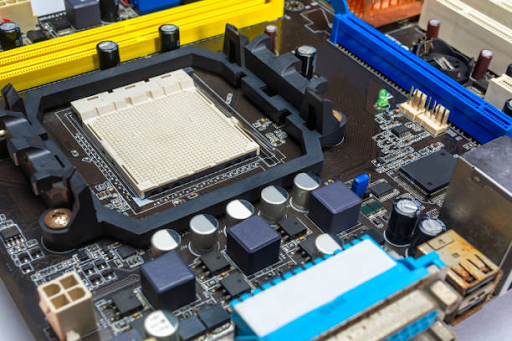
In the fast-paced world of electronics, innovation is the lifeblood of progress. Technological advancements seem to happen at an exponential rate, and at the heart of this revolution are the electronic components that power our devices. From smartphones and laptops to high-performance computers and the Internet of Things (IoT) devices, electronic components play a pivotal role in pushing the boundaries of what’s possible. In this article, we’ll explore how the right components drive technological advancements, revolutionizing the way we live, work, and communicate.
The Role of Electronic Components
Electronic components are the building blocks of electronic circuits, and they come in a wide variety of forms, each with its own unique purpose. These components include resistors, capacitors, diodes, transistors, microprocessors, and more. By selecting the appropriate components and integrating them effectively, engineers and designers can create innovative electronics that cater to the ever-evolving demands of the modern world.
Key Components That Drive Innovation
- Microprocessors: Microprocessors are the brains of electronic devices, responsible for executing instructions and performing calculations. With advancements in microprocessor technology, devices have become faster, more efficient, and capable of handling complex tasks. Companies like Intel, AMD, and ARM have been at the forefront of developing cutting-edge microprocessors.
- Semiconductors: Semiconductors are the heart of modern electronics, and they have undergone remarkable innovation. Companies like NVIDIA and AMD have made strides in developing high-performance semiconductors, enabling the gaming and artificial intelligence industries to flourish.
- Sensors: Sensors, such as accelerometers and gyroscopes, are fundamental in IoT devices. They enable precise data collection, making our smart homes, wearables, and autonomous vehicles possible. Innovations in sensor technology have made these devices more responsive and accurate.
- Batteries: The quest for longer-lasting, more efficient batteries has driven innovation in the electronic components industry. Lithium-ion batteries, for instance, have undergone substantial improvements in energy density and charging speed.
The Power of Connectivity
Innovation in electronics doesn’t stop at individual components; connectivity is equally vital. The ability to transfer data quickly and reliably has revolutionized how we interact with technology.
- Wireless Communication: The development of Wi-Fi, Bluetooth, and cellular technologies has made it possible for devices to communicate seamlessly. This has led to the rise of smart homes, where everything from thermostats to security cameras can be controlled remotely.
- Internet of Things (IoT): The IoT ecosystem relies heavily on connectivity. Electronic components distributor plays a crucial role in providing the components required for IoT devices to function. These devices can collect and transmit data, making our lives more convenient and efficient.
- 5G Technology: The rollout of 5G networks has unlocked new possibilities in mobile communication, enabling faster data transfer and lower latency. This technology is the backbone of future innovations, including augmented reality, autonomous vehicles, and telemedicine.
Emerging Technologies
Innovation in electronics is not limited to what we use today. It extends to emerging technologies that promise to reshape our future.
- Quantum Computing: Quantum computers, which use the principles of quantum mechanics, have the potential to solve complex problems at a speed unimaginable by classical computers. Companies like IBM and Google are racing to make quantum computing a practical reality.
- Flexible Electronics: The development of flexible electronic components, such as OLED displays and wearable technology, has opened up new horizons. These components can be integrated into clothing, medical devices, and more, enabling a future where technology seamlessly integrates into our daily lives.
- Artificial Intelligence: AI is a driving force behind innovation. Electronic components, especially high-performance GPUs, are essential for machine learning and deep learning. These technologies are paving the way for advancements in natural language processing, autonomous robotics, and personalized medicine.
The Future of Innovation
The pace of innovation in electronics is unlikely to slow down. With a global network of suppliers and manufacturers, electronic components distributors play a crucial role in ensuring that the right components are readily available to drive innovation forward.
The future promises even more exciting developments in electronics, and IC CHIPS, one of the best electronic components distributor, has been at the forefront of this innovation. From quantum computing and AI to sustainable technology, the possibilities are endless. As long as we have the right components, the drive for innovation will continue to shape our world and redefine the limits of what’s possible.
Conclusion
In conclusion, electronic components are the unsung heroes of the technological revolution. They are the foundation upon which all our electronic devices are built, and the right components drive the innovations that have transformed the way we live and work. As we look ahead to the future, it’s clear that the synergy between cutting-edge components and visionary design will continue to propel us into a world of limitless possibilities.
Interesting Related Article: “How is fiber laser cutting revolutionizing the world of manufacturing?“

